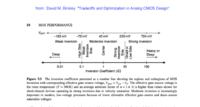Junus2012
Advanced Member level 5
Dear all
after long time of dealing with op-amp design still I am stuck with many basic things, I found my chance in this forum to ask you about it...
how could i know if my op-amp is working in the strong inversion or in the weak inversion??, i read from many resources that i have to check the overdrive voltage if it is below 50 mV then it is working in the weak inversion. is it right?? or if you have any suggestions then i am looking forward for it
Thank you
after long time of dealing with op-amp design still I am stuck with many basic things, I found my chance in this forum to ask you about it...
how could i know if my op-amp is working in the strong inversion or in the weak inversion??, i read from many resources that i have to check the overdrive voltage if it is below 50 mV then it is working in the weak inversion. is it right?? or if you have any suggestions then i am looking forward for it
Thank you
